During the wheat harvest, this treasure town in Henan can no longer stay hidden
这座郑州、洛阳两座古都间的城市,这座河洛交汇处的城市,被宋陵带上了“热搜”。
Located between the two ancient capitals of Zhengzhou and Luoyang, at the confluence of the Luo and Yellow Rivers, this city has been thrust into the "trending topics" by Song Mausoleums.
麦收的大幕落下,巩义的面纱揭开。
As the curtain falls on the wheat harvest, Gongyi's veil is lifted.
这里是河洛文化的摇篮、诗圣杜甫的故乡,是河南省历史文化名城,是华夏文明发祥地的核心区之一。
It is the cradle of Heluo culture, the hometown of the Poet-Sage Du Fu, a famous historical and cultural city in Henan Province, and one of the core birthplaces of Chinese civilization.
“山河四塞,巩固不拔”,洛清河浊,悠悠华夏。
"Surrounded by mountains and rivers, it's solid and unshakable." Here the clear Luo River meets the turbid Yellow River, echoing the long history of the Chinese nation.
今天,一起来走进被北宋皇帝看中的这块“宝地”。
Today, let's step into this "treasured land" favored by the Northern Song emperors.

河洛交汇处
At the Confluence of the Luo and Yellow Rivers
麦田里的“守望者”火了
The "Watchmen" in the Wheat Fields Have Become Famous
巩义乡间麦田里,有一群来自北宋的“守望者”。今年麦收时节,千年宋陵与金黄麦田同框登上热搜,也让位于郑州、洛阳间的巩义市成功出圈。
In the rural wheat fields of Gongyi, there stands a group of "watchmen" from the Northern Song Dynasty. This wheat harvest season, the millennium-old Song Mausoleums framed against the golden wheat fields went viral, bringing Gongyi, located between Zhengzhou and Luoyang, into the trending topics.
巩义宋陵是中国现今保存最完整的两大帝王陵墓群之一,是国家重点文物保护单位,被形象地称为“地上的露天石雕博物馆。”
The Song Mausoleums in Gongyi are one of the two best-preserved imperial mausoleum complexes in China, a national key cultural relic protection unit, and vividly known as an "open-air stone carving museum on the ground".
在这里,李白的“西风残照,汉家陵阙”具象化了。北宋7位皇帝及其后妃宗亲、名将勋臣的陵寝,地面石刻尚存1027件,总面积189.04平方公里,是我国现存面积最大、地面遗址最完整的帝陵之一。
Here, Li Bai's poetic image of "Against the setting sun in the west wind, stand mausoleums of the Han Dynasty" has been visualized. Song Mausoleums contain the tombs of seven Northern Song emperors, their empresses, relatives, and notable generals and ministers, as well as 1,027 existing ground stone carvings, covering a total area of 189.04 square kilometers. It is one of the largest and best-preserved imperial mausoleums with intact ground remains in China.
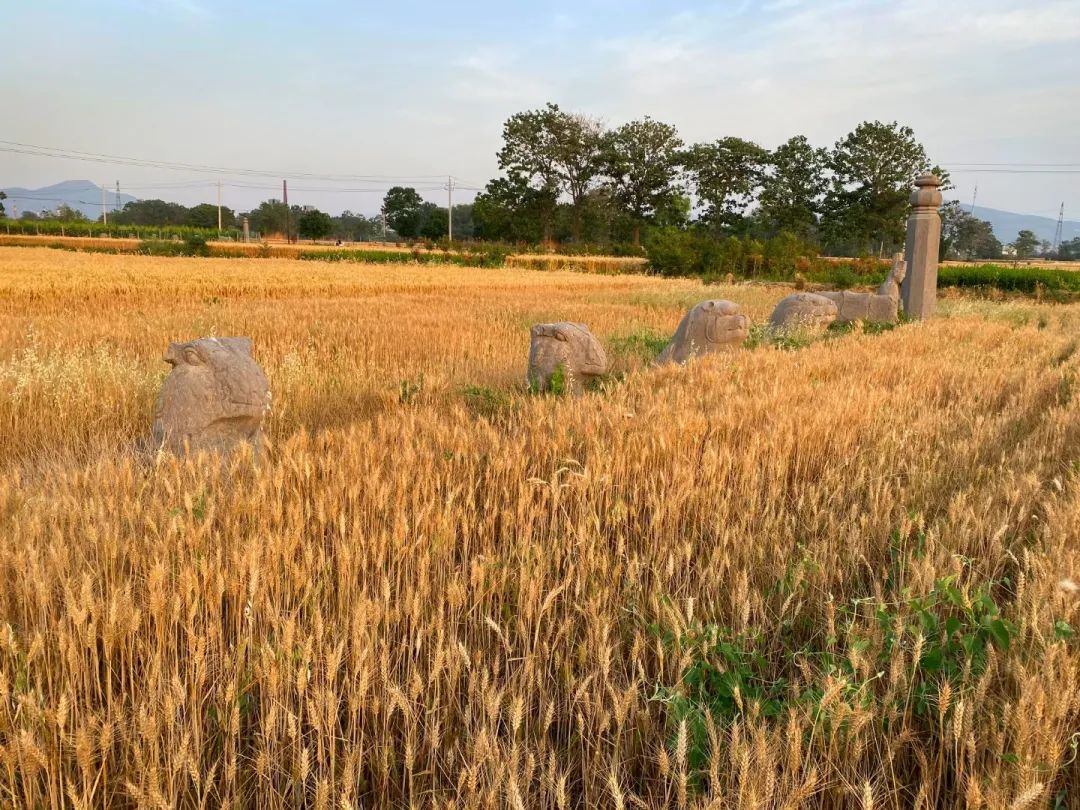
巩义宋陵麦田景象
The Scene of Song Mausoleums and Wheat Fields
宋陵与村居、农田早已融为一体。
The Song Mausoleums have long merged with villages and farmland.
6月6日傍晚,滹沱村永熙陵前,刚放学的孩子们在石像间穿梭,村中的老人坐在石座上吃饭、抽烟、谈天说地。
On the evening of June 6, in front of the Yongxi Mausoleum in Hutuo Village, children just out of school shuttle among the stone statues, while elderly villagers sit on stone seats to eat, smoke, and chat.
每隔一段时间,永裕陵文物保护站就有声音从对讲机里传出——“永裕陵,永裕陵回话”。保护站工作人员白先生立即拿起对讲机回话说:“永裕陵正常,永裕陵正常。”
From time to time, the walkie-talkie at the Yongyu Mausoleum Cultural Relic Protection Station crackles to life: "Yongyu Mausoleum, please respond." Staff member Mr. Bai immediately picks up the walkie-talkie and replies, "Yongyu Mausoleum is normal, all clear."
白先生是八陵村人,八陵取自“七帝八陵”,这里埋葬着北宋除徽钦二宗之外的其余七帝,加上赵匡胤的父亲赵弘殷的陵墓,统称“七帝八陵”。白先生说,永裕陵有52个石像生,每一个小时我们都要去巡逻一次、检查这些文物,陵区这边24小时都有人在值班。
Mr. Bai is from Baling Village, named after the "Seven Emperors and Eight Mausoleums" (the tombs of the seven Northern Song emperors excluding Huizong and Qinzong, plus the tomb of Zhao Hongyin, father of Zhao Kuangyin). He says, "Yongyu Mausoleum has 52 stone statues. We patrol and inspect these relics every hour, and the mausoleum area is guarded 24 hours a day."
一代代农民,在这里收割麦子,种下玉米,收获一季庄稼,种下一季希望。一群群孩子,在石像生的注视下悄然长大;每一次夕阳,都在宋陵间投下泛黄的斜晖。
Generations of farmers have harvested wheat here, planted corn, reaped crops, and sown hopes. Groups of children have grown up under the watchful eyes of the stone statues, and every sunset casts a golden slanting light over the mausoleums.
山河之固,河洛故国
Solid Mountains and Rivers, the Ancient Heluo Kingdom
宋陵所在的巩义,也与“固”字密切相关。
Gongyi, where the mausoleums are located, is also deeply connected to the word "solid" ("Gu" in Chinese).
它东起虎牢关,与荥阳相邻;西至黑石关,和偃师相连;南面嵩山,与新密、登封分界;北临黄河,与温县、孟州相望。
It stretches from Hulao Pass in the east (adjacent to Xingyang) to Heishi Pass in the west (connected to Yanshi), borders Songshan Mountain in the south (separating it from Xinmi and Dengfeng), and faces the Yellow River in the north (across from Wen County and Mengzhou).
巩义古称巩县,取“山河四塞,巩固不拔”之意。嘉靖《巩县志》记载:“四面有山河之固,故名巩。”因为地扼古都洛阳,又有“东都锁钥”之称,自古以来便是兵家必争之地。
Ancient Gongyi was called Gong County, literally meaning "surrounded by mountains and rivers, solid and unshakable". According to Gong County Annals of the Jiajing period, "Surrounded by mountains and rivers on all sides, it is named Gong (solid)." Due to its strategic position guarding the ancient capital Luoyang, it is also known as the "Key to the Eastern Capital" and has been a contested military hub since ancient times.
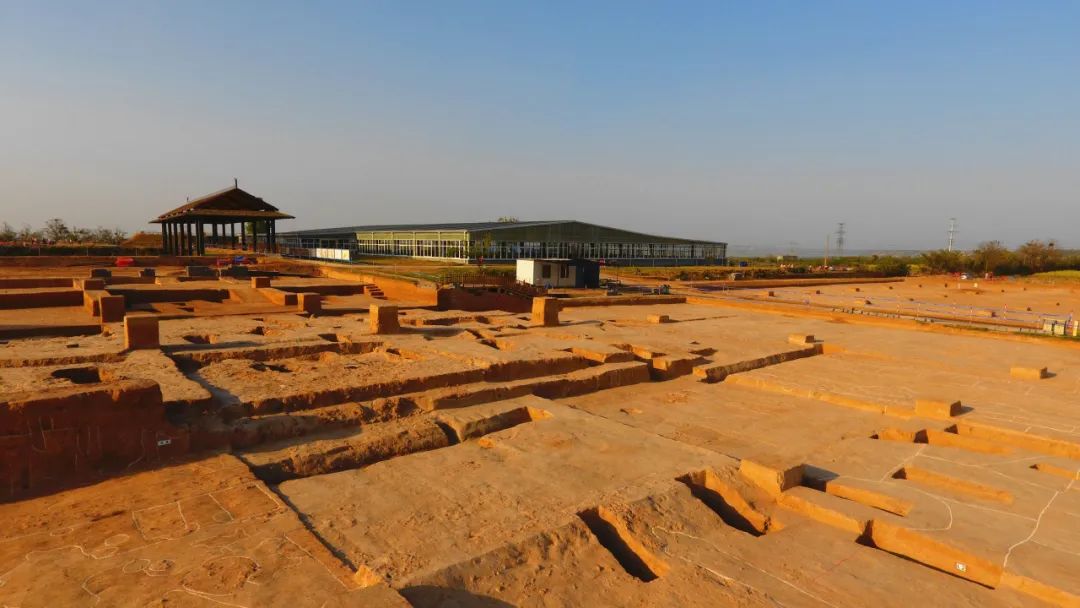
双槐树遗址
Shuanghuai Tree Site
从秦庄襄王元年(公元前249年)计算,巩义迄今已有2200多年的置县历史。相对来说,巩义的文明史更为悠久,这里是华夏文明发祥地的核心区之一,位于河洛镇双槐树村的双槐树遗址,是距今5300年左右的“河洛古国”都邑。
Calculated from the first year of King Zhuangxiang of Qin (249 BCE), Gongyi has over 2,200 years of county-level administrative history. Its civilizational history is even longer—it is one of the core birthplaces of Chinese civilization. The Shuanghuai Tree Site in Shuanghuai Tree Village, Heluo Town, is the capital of the "Heluo Ancient Kingdom" dating back approximately 5,300 years.
双槐树遗址是迄今为止发现的在黄河流域仰韶文化中晚期这一中华文明形成的初期规格最高的具有都邑性质的中心聚落,被誉为“早期中华文明的胚胎”。
The Shuanghuai Tree Site is the highest-level urban-center settlement discovered so far in the middle and late Yangshao Culture of the Yellow River Basin, an early stage of Chinese civilization's formation. It is hailed as the "embryo of early Chinese civilization."
因河而兴的康百万庄园
The Kang Baiwan Manor Flourishing by the Rivers
河洛交汇处,伊洛河水与黄河水泾渭分明,远远看去,仿佛“鸳鸯锅”。
At the confluence of the Heluo Rivers, the clear Yiluo River meets the turbid Yellow River, forming a striking "mandarin duck pot" pattern from afar.
这里,有着一座千年前的国家粮仓——洛口(兴洛)仓遗址。《巩县志》记载:“隋大业三年,于巩东南原上筑仓,周回二十余里,穿三千窖,窖容八千石,亦曰兴洛仓。”它是隋唐漕运路线上的一处重要粮仓,见证了隋唐大运河的兴衰。
Here lies the millennium-old national granary—the Luokou (Xingluo) Granary Site. According to Gong County Annals, "In the third year of the Daye reign of the Sui Dynasty, a granary was built on the southeast plain of Gong County, spanning over 20 li, with 3,000 cellars, each holding 8,000 dan of grain, also called Xingluo Granary." It was a crucial granary along the Sui-Tang Grand Canal, witnessing the rise and fall of this ancient waterway.
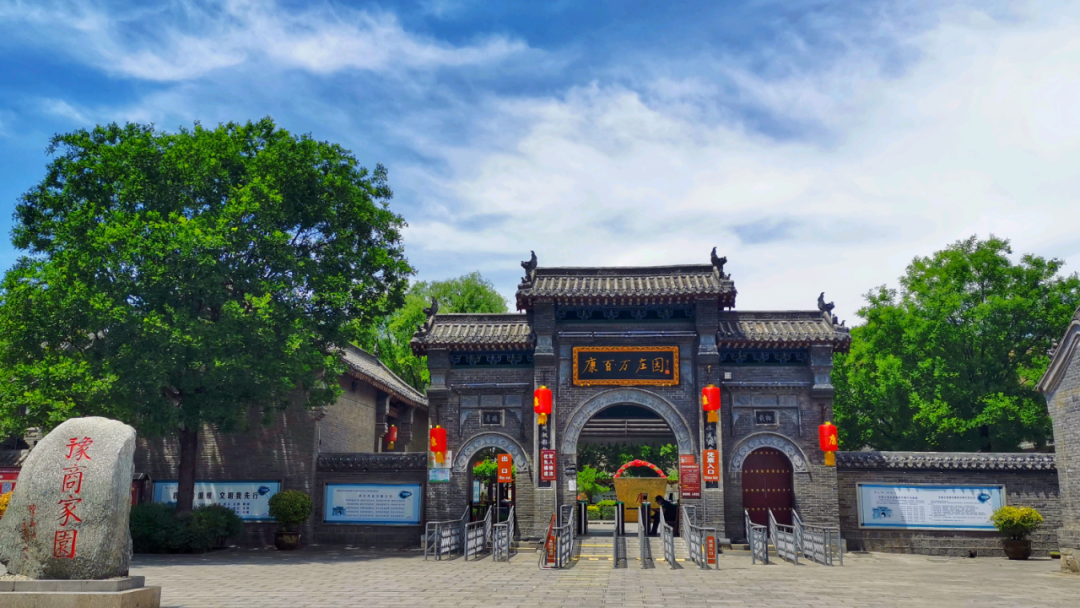
康百万庄园
Kang Baiwan Manor
作为水道,运河是曾经的国家生命线;作为商道,河洛交汇处曾经千帆竞发、商旅往来。明初迁居巩义康店镇的康百万家族,以地利起家,因大河造船,成为“富甲三省、船行六河”的庞大商业帝国。
As a waterway, the canal was once the nation's lifeline; as a commercial route, the Heluo confluence once bustled with sailing ships and merchants. The Kang Baiwan family, who settled in Kangdian Town, Gongyi, at the beginning of the Ming Dynasty, leveraged their geographic advantage and river-based shipbuilding to establish a vast commercial empire known as "the wealthiest in three provinces, with ships sailing on six rivers".
如今的康百万庄园,纵跨明、清、民国三个历史时期的风霜雨雪,是华北黄土高原封建堡垒式建筑的代表,被誉为豫商精神家园、中原古建典范。康百万庄园内保存有碑刻、牌匾、古玩、家具、书画等历史文物3000余件,对研究明清文化、民间风俗、古代建筑等都有较高的价值。
Today, the Kang Baiwan Manor, spanning the Ming, Qing, and Republican eras, represents the fortified architectural style of the North China Loess Plateau. It is praised as the spiritual home of Henan merchants and a model of Central Plains ancient architecture. The manor preserves over 3,000 historical relics, including steles, plaques, antiques, furniture, and calligraphy, offering high value for studying Ming-Qing culture, folk customs, and ancient architecture.
深山佛寺与山下石窟
Buddhist Temples in the Mountains and Grottoes at the Foot
宋陵位于青龙山脚下,而在青龙山深处,有着一座千年古刹慈云寺。
The Song Mausoleums lie at the foot of Qinglong Mountain, where deep in the mountains stands the thousand-year-old Ciyun Temple.
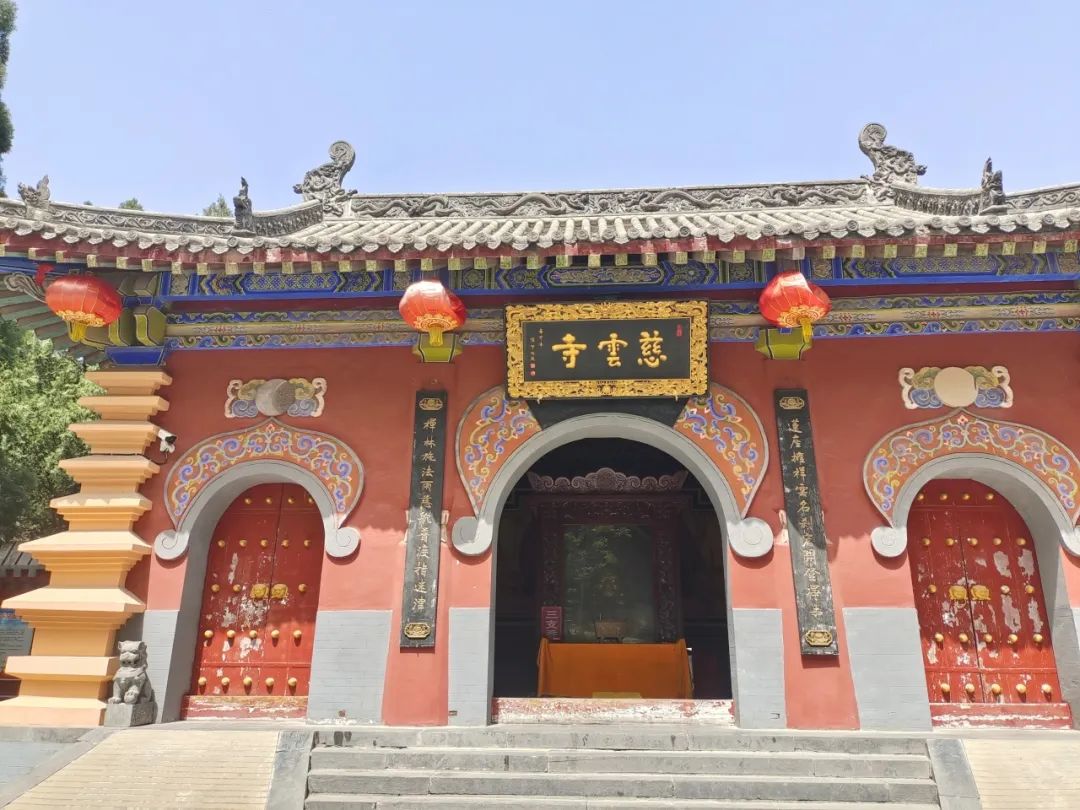
慈云寺
Ciyun Temple
慈云寺始建于东汉明帝永平七年,是佛教传入中原后,天竺高僧摄摩腾、竺法兰创建的第一座民办寺院,素有“释源”和佛教“祖庭”之誉。
Founded in the 7th year of the Yongping reign of Emperor Ming of the Eastern Han Dynasty, Ciyun Temple was the first non-imperial Buddhist temple established by Indian monks Kashyapa Matanga and Dharmaraksa after Buddhism entered the Central Plains. It is renowned as the "Origin of Buddhism" and the "Ancestral Temple" of Chinese Buddhism.
根据《巩县志》记载,巩义境内的山,分为“南北山”。“山在南者,与嵩对峙,而支干自分;在北者,与邙连体,而主名各别。”青龙山属于南山系,邙岭属于北山系。
According to Gong County Annals, the mountains in Gongyi are divided into "Southern Mountains" and "Northern Mountains". "The southern mountains face Songshan Mountain, with distinct branches; the northern mountains are connected to Mangling, each with its own name." Qinglong Mountain belongs to the Southern Mountain range, while Mangling is part of the Northern Mountain range.
位于邙岭大力山下的石窟寺,是中原地区一座重要的佛教石窟。和龙门石窟、云冈石窟、莫高窟等相比虽然规模较小,但寺后120米长的石窟群落中有着上万尊佛龛佛像。
The Grotto Temple at the foot of Dali Mountain in Mangling is an important Buddhist grotto in the Central Plains. Though smaller in scale than the Longmen, Yungang, and Mogao Grottoes, its 120-meter-long grotto complex houses tens of thousands of Buddhist niches and statues.
其中,第一窟中的“帝后礼佛图”是国内保存最完整的孤品,被称为无价之宝。
Among them, the "Emperor and Empress Worshiping Buddha" picture in the first grotto is the best-preserved unique artifact in China, deemed invaluable.
这里承载着杜甫的童年
Where Du Fu's Childhood Unfolded
物华天宝,人杰地灵。巩义在历史上也出了不少名人,其中最著名的莫过于诗圣杜甫。
Blessed with natural treasures and outstanding talents, Gongyi has nurtured many notable figures in history, none more famous than the Poet-Sage Du Fu.
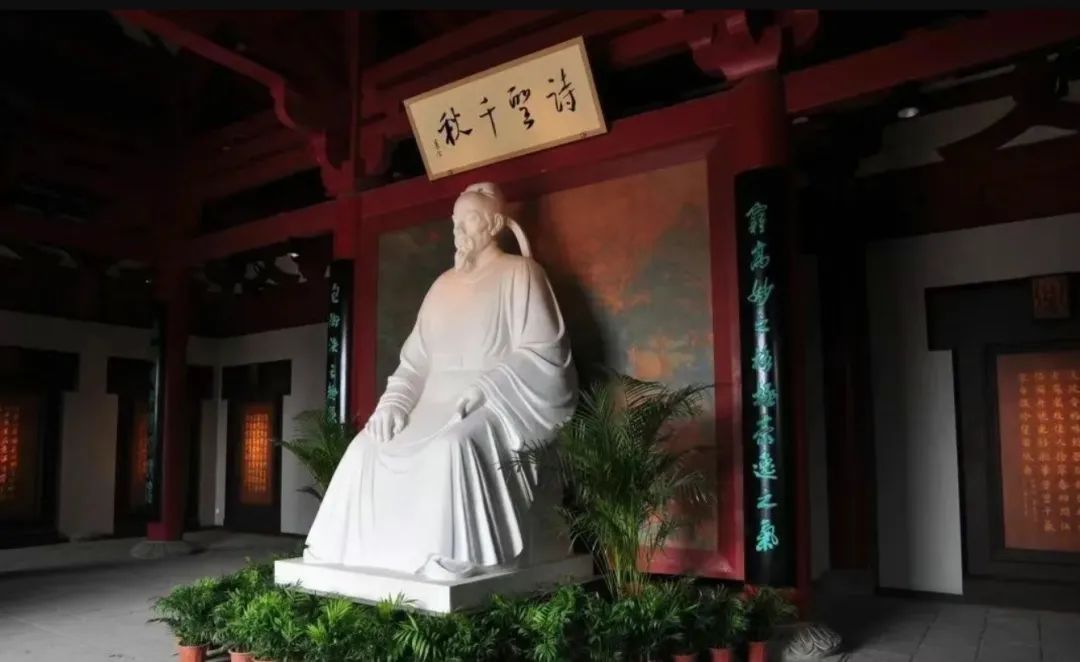
杜甫故里
Du Fu's Hometown
巩义站街镇瑶湾村的笔架山下,是杜甫出生和童年、少年时代生活的地方。这里,见证了一个诗坛神童的诞生:“七龄思即壮,开口咏凤凰。九龄书大字,有做成一囊。”这里,也记录了一个稚气未脱的少年的日常:“忆年十五心尚孩,健如黄犊走复来。庭前八月梨枣熟,一日上树能千回。”这里,也滋养了一个忧国忧民诗人的胸怀:“安得广厦千万间,大庇天下寒士俱欢颜”。
At the foot of Bijia Mountain in Yaowan Village, Zhanjie Town, Gongyi, lies the birthplace and childhood home of Du Fu. Here, a prodigy of poetry emerged: "At seven, my mind was already strong, singing of phoenixes when I opened my mouth. At nine, I wrote large characters, filling a bag with my works." Here, the daily life of an innocent boy was recorded: "At fifteen, my heart was still childlike, as vigorous as a young ox running back and forth. When pears and jujubes ripened in the courtyard in August, I climbed trees a thousand times a day." Here, the heart of a poet concerned for the nation and people was nurtured: "Oh, to have ten thousand mansions, sheltering all the world's poor in warmth and joy!"
杜甫故里,是一处集观光游览、朝拜纪念、修学教育、文化体验等于一体的大型文化观光游览区。故里占地372亩,景区介绍了杜甫的生平、展示了杜诗的精华以及在中国诗歌史上的成就,是一座杜甫文化的“宝库”。
Du Fu's Hometown is a large cultural tourist area integrating sightseeing, commemoration, education, and cultural experiences. Spanning 372 mu, the scenic area showcases Du Fu's life, the essence of his poetry, and his achievements in Chinese poetic history, serving as a "treasure trove" of Du Fu's culture.
杜甫当得起中国古代“人民艺术家”的称号。巩义还有豫剧名家常香玉的故居,她的“戏比天大”的职业精神,她的捐赠飞机支援抗美援朝的爱国情怀,都诠释着她“人民艺术家”的实至名归。
Du Fu deserves the title of "People's Artist" in ancient China. Gongyi also boasts the former residence of the renowned Henan Opera singer Chang Xiangyu, whose professional spirit of "Opera is More Precious Than Heaven" and patriotic devotion—donating fighter jets to support the Korean War—embody her well-deserved status as a "People's Artist."
悠久神话中的文明起源
Mythological Origins of Civilization
巩义的历史,从双槐树出发,向下绵延五千多年,向上依然源远流长。
Gongyi's history stretches back over five thousand years from the Shuanghuai Tree Site, with even older legends.
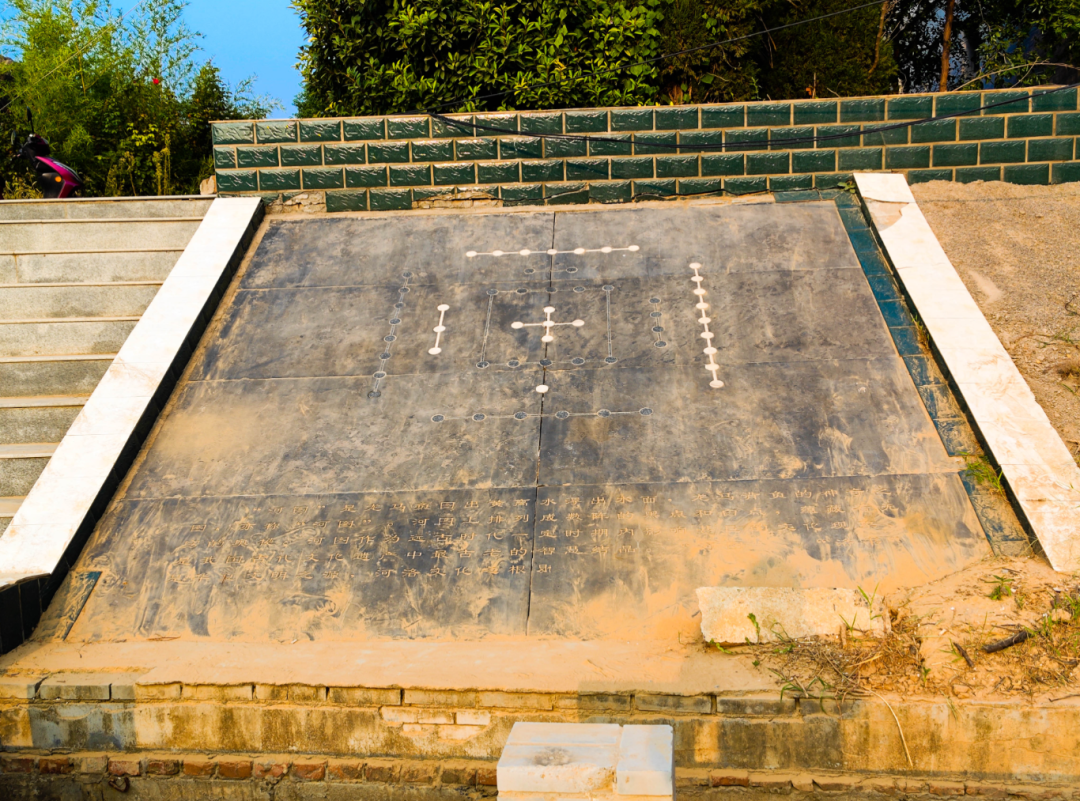
伏羲台遗址
Fuxi Platform Site
这里,流传着不少与中华文明形成相关的神话传说。比如,伏羲氏在看到河洛交汇形成的“太极奇观”后,受启发画出了阴阳图,推演先天八卦。迄今,在洛河岸边,还保留着伏羲画八卦的遗址。
Here, many myths related to the birth of Chinese civilization persist. For example, after witnessing the "Taiji wonder" formed by the confluence of the Luo and Yellow Rivers, Fuxi is said to have drawn the Yin-Yang diagram and deduced the Eight Diagrams. To this day, the site where Fuxi drew the Eight Diagrams remains along the Luo River.
黄河岸边的鸿沟遗址,是燧人氏钻木取火的地方。传说神农氏曾在这里尝百草并教民农桑。
The Honggou Site on the Yellow River bank is said to be where Suiren Shi invented fire by drilling wood. Legend has it that Shennong Shi once tasted herbs here and taught agriculture to the people.
这里,也出土了大象化石,诠释着河南简称“豫”的由来。(中文来源/大河网 记者/刘瑞朝 杨露露 编译/洪建园)
Elephant fossils unearthed here also explain the origin of Henan’s abbreviation “豫” (Yu), which contains the character for "elephant."
Web editors: Shen Jianqi, Li Siyao
